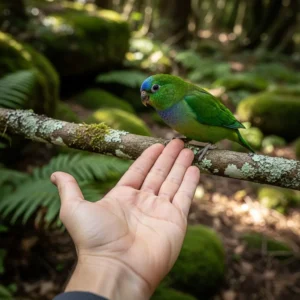
The Telltale Tail: Decoding a Cat’s Mood Barometer
A cat’s tail is one of its most expressive features, acting like a barometer for its emotional state. Paying attention to its position and movement can give you instant insight into what your cat is feeling.
Tail High and Upright
When a cat approaches you or another friendly animal with its tail held straight up, this is a sign of confidence, happiness, and a willingness to interact. It’s the feline equivalent of a friendly wave and an open invitation for contact. Often, the very tip of the tail may have a slight hook or quiver, like a question mark. This “question mark tail” is an especially happy and affectionate greeting. It’s a great time to offer a gentle pet on the cheek or under the chin.
Tail Low or Tucked
A tail held low, parallel to the ground, can indicate a neutral or slightly apprehensive mood. The cat is assessing the situation. If the tail is tucked down between the legs, it’s a clear signal of fear, anxiety, or submission. A cat in this posture feels threatened and is trying to make itself as small as possible. In this situation, it’s crucial not to force interaction. Instead, give the cat space and try to identify and remove the source of its fear.
Thrashing or Thumping Tail
A tail that is rapidly whipping or thrashing back and forth is a strong indicator of agitation, annoyance, or overstimulation. You might see this during a petting session that has gone on too long or when the cat is frustrated by a closed door. A tail thumping hard against the floor while the cat is lying down sends the same message: “I am not happy right now.” This is a clear warning sign to stop what you are doing. Ignoring this can lead to a swat or a bite as the cat escalates its communication.
Puffed-Up Tail
When a cat’s fur stands on end, a phenomenon known as piloerection, its tail puffs up to resemble a bottle brush. This is a defensive reaction to a perceived extreme threat. The cat is trying to make itself look bigger and more intimidating to scare off a potential enemy, such as a strange dog or another cat. This is often accompanied by an arched back, hissing, and flattened ears. A cat in this state is terrified and ready to fight if necessary. The best course of action is to remove the threat and give the cat a safe, quiet place to calm down.
Slow, Gentle Swish
A slow, lazy swish of the tail, especially when the cat is lying down or focusing on something, usually indicates concentration or mild interest. You might see this when your cat is watching a bird outside the window or is about to pounce on a toy. It’s a sign of focused energy, not to be confused with the angry thrashing. The movement is smoother and more deliberate.















